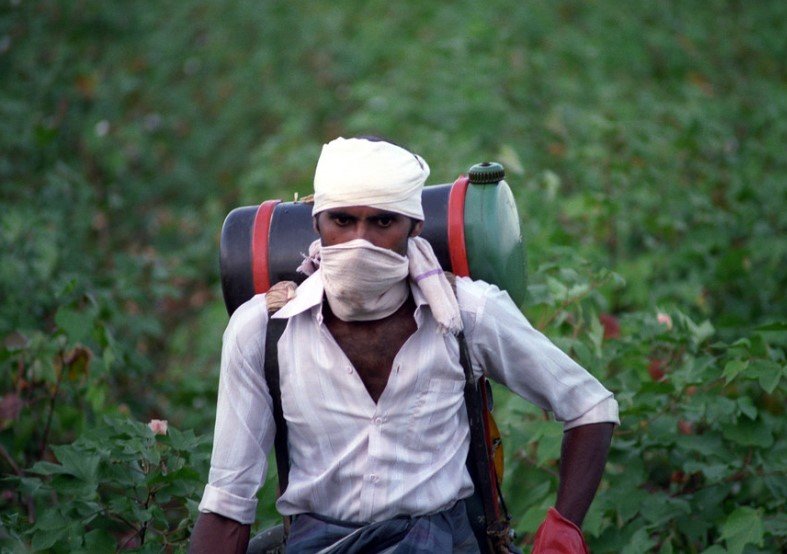Georgia farmers face a new threat as an invasive insect known as the cotton jassid spreads quickly across the state. Officials from the Georgia Department of Agriculture issued warnings on September 1, 2025, urging cotton producers to scout fields for this pest that feeds on leaves and could slash yields in one of the state’s top crops.
What Is the Cotton Jassid?
This small leafhopper, also called the two-spot cotton leafhopper, comes from the Indian subcontinent. It first appeared in the United States in Florida back in 2024 and has since moved into neighboring states like Alabama, South Carolina, and now Georgia.
Experts describe the adult insect as tiny with two black spots on its wings. The young ones, or nymphs, are harder to identify but cluster on the underside of leaves. They suck sap from plants, causing yellowing, puckering, and a condition called hopper burn that weakens crops.
The pest does not just target cotton. It also attacks okra, eggplant, sunflowers, and other vegetables, making it a broad risk for southern agriculture.

How the Pest Is Spreading in Georgia
The cotton jassid has been confirmed in at least 27 counties in south Georgia as of early September 2025. Agriculture officials say it spreads fast, often starting at field edges and moving inward.
Recent reports show sightings in key cotton-growing areas, with some fields already showing damage. The timing is bad, coming right before harvest season when plants are most vulnerable.
Farmers first noticed unusual leaf damage in late August. By September 1, state leaders like Agriculture Commissioner Tyler Harper called for immediate checks. Extension agents are helping with identification and control plans.
Weather plays a role too. Warm, humid conditions in the Southeast help the insect thrive and multiply quickly.
Impact on Georgia’s Cotton Industry
Cotton ranks as Georgia’s number one row crop, worth over $1 billion yearly. A bad infestation could cut yields by up to 30 percent in affected fields, based on early estimates from university researchers.
Beyond direct losses, farmers might face higher costs for pesticides and monitoring. If the pest spreads further, it could hurt exports and local jobs tied to farming.
Here are some key economic effects:
- Reduced harvest quality, leading to lower market prices.
- Increased spending on insecticides and scouting efforts.
- Potential ripple effects on related industries like ginning and textiles.
Other crops are at risk too. Okra and eggplant growers in the region report early signs of infestation, which could add to statewide losses.
Efforts to Control the Invasion
State and university teams are stepping up. The University of Georgia Extension service is developing treatment guidelines, including scouting tips and insecticide options.
To scout effectively, farmers should check the underside of top leaves, looking for nymphs or spotted adults. Thresholds for action are still being set, but experts suggest treating if populations hit certain levels.
Recommended steps include:
- Inspect fields weekly, focusing 30 to 40 feet from edges.
- Use approved insecticides only when needed to avoid resistance.
- Report findings to local extension offices for tracking.
Integrated pest management is key. This mixes chemical controls with natural methods like beneficial insects or crop rotation to limit spread.
A table of common control methods:
| Method | Description | Pros | Cons |
|---|---|---|---|
| Scouting | Regular field checks for pests | Early detection | Time-consuming |
| Insecticides | Chemical sprays on infested areas | Quick results | Cost and resistance |
| Crop Rotation | Switching crops to break pest cycles | Long-term prevention | Disrupts planning |
| Natural Predators | Encouraging bugs that eat jassids | Eco-friendly | Slower effect |
These approaches aim to protect crops without over-relying on chemicals.
What Farmers and Residents Should Do
Anyone spotting the insect should contact their county extension office right away. This helps map the spread and refine response plans.
For non-farmers, awareness matters too. Avoid moving plants or soil from infested areas to prevent accidental transport.
Ongoing research at places like the University of Georgia is crucial. Scientists are studying the pest’s biology to find weaknesses, such as cold sensitivity that might limit northern spread.
Looking Ahead for Georgia Agriculture
This invasion highlights broader challenges from climate change and global trade, which bring more pests to new areas. Similar issues hit other states with pests like the spotted lanternfly in recent years.
Farmers remain hopeful with quick action. Support from federal agencies could bring more resources if the problem grows.
Share this article if you know someone in farming, and comment below with your thoughts on how Georgia can tackle invasive pests. Your input could spark helpful discussions.
